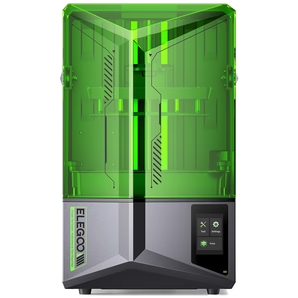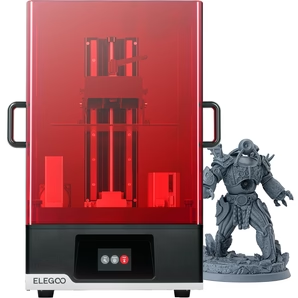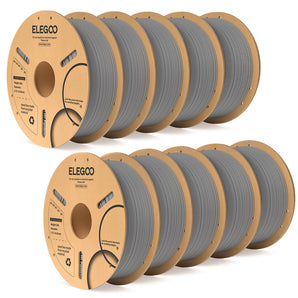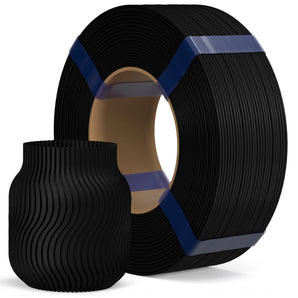If sports is your thing, then we've got some cool 3D Printing Projects for you to learn more about!
Sports has always been a hotbed of innovation and creativity, with technology acting as a catalyst in transforming the landscape of the industry. At the forefront of this transformation is 3D printing, a marvel of modern engineering that is reshaping how we conceive, design, and manufacture sports equipment. In this article, we'll explore the world of 3D-printed sports equipment, its applications, and the transformative potential it holds for the sports industry.
What’s the best 3D Printer for Sports Equipment?
Compared with a resin printer, FDM is more suitable for printing Sports Equipment. We sell FDM 3D printers, with our latest models being the Neptune 4 FDM 3D Printer and Neptune 4 Pro FDM 3D Printer.
Why Do We Recommend FDM vs Resin for Sports Equipment?
The primary reason is that FDM (Fused Deposition Modeling) 3D printers and resin-based 3D printers have different capabilities and attributes that make each more suited for certain applications.
FDM printers have the advantage of being able to work with a wider range of materials. They can use many types of thermoplastic filaments, such as PLA, ABS, Nylon, PETG, TPU, and others. This wide range of materials allows for a broad spectrum of physical properties in the final print, from rigid to flexible, something which compliments the different levels of rigidity that sports equipment requires.
Also, FDM-printed parts are typically stronger than those printed with resin, which makes FDM more suitable for functional parts and prototypes that will be put under stress; again, perfect for printing sports equipment that requires structural integrity.
What are the Benefits of 3D Printing in Sports Equipment Manufacturing?
3D printing, or additive manufacturing, offers a plethora of advantages over traditional manufacturing methods. For one, it allows manufacturers to prototype designs rapidly and inexpensively. With the use of 3D printing, design iterations can be produced using 3D models and tested for performance within a fraction of the time it would take using conventional methods.
Moreover, the sports industry often requires customization to cater to the specific needs of individual athletes. This is another area where 3D printing shines. It can effortlessly create custom-fit equipment, such as mouthguards or helmets, tailored to the unique anatomy of the user. 3D scanning equipment captures precise measurements, ensuring a perfect fit for the wearer.
How are High-Performance 3D Printing Materials Used in Sports?
When we talk about sports equipment, durability and performance are paramount. High-performance 3D printing materials have emerged as an excellent solution. Materials like carbon fiber-reinforced plastics can provide the strength and durability needed for high-contact sports. For example, the diamond helmet used in American football is produced using 3D-printed lattice structures. These structures not only offer superior protection but also enhance shock absorption, making the helmet safer.
High-performance materials also offer a high degree of flexibility, an essential characteristic for certain sports equipment like sports shoes. For instance, 3D-printed soles can be designed with specific flex points that traditional manufacturing techniques cannot achieve.
The Role of Customization in 3D-Printed Sports Equipment
One of the most compelling applications of 3D printing in the sports sector is the ability to customize equipment. Customization not only provides a better fit but can also optimize performance. For instance, golf clubs can be 3D printed to perfectly match a golfer's swing, or a helmet liner can be printed to provide more protection based on the wearer's head shape and size.
By using 3D software to create a digital model, manufacturers can tweak designs on a granular level. This flexibility allows athletes and sports teams to have equipment that is specifically customized to their body shape, performance style, and sports requirements.
The Future of 3D Printing in the Sports Industry
Looking ahead, the future of 3D printing in the sports industry is promising. As more advancements in 3D printing technologies come to the fore, and the benefits of 3D printing become more widely recognized, the application of this technology in sports is only set to increase.
The range of materials available for 3D printing is also expanding, opening up new possibilities for equipment design. For instance, 3D printing can be used to create lighter equipment, improving mobility and performance in certain sports.
Concluding Thoughts
In summary, 3D printing is transforming the way sports equipment is designed and manufactured:
- Rapid prototyping allows for faster design iterations and testing.
- High-performance materials enable the creation of durable, high-performance sports equipment.
- Customization through 3D printing provides a better fit and optimized performance for athletes.
- As technology and materials advance, the possibilities for 3D printing in sports will only increase.
In an industry that continually pushes the boundaries of innovation, 3D printing is becoming a game-changer, offering the sports sector a plethora of opportunities for growth and development. Whether you're an athlete aiming to be on top of your game, a manufacturer seeking to optimize your production, or a fan fascinated by the evolving world of sports, 3D-printed sports equipment has something to offer.
Other Unique Printing Projects To Explore
The capabilities of 3D printing have exploded, allowing enthusiasts to conceptualize, for example, some of the best board game projects, taking tabletop gaming to the next level. We've mentioned these two because they really are two of the more popular uses for 3D printing. As many dive into the intricate world of diorama projects, the cosplay community also is greatly benefitting, showcasing distinctive attire and accessories. Meanwhile, jewelry artisans are employing this technology to produce exquisite and unique designs.
ther example include how 3D printing has paved the way for DIY home projects to flourish and being able to create bespoke garden tools. 3D toys projects has seen a growth in popularity with many focusing on educational benefits. Dentistry, in particular, is undergoing a shift, with tailored tools and molds revolutionizing patient care. It's inspiring to see how the innovation in printing braille resources is enhancing accessibility.





























































































































































